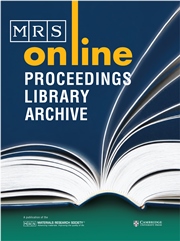Crossref Citations
This article has been cited by the following publications. This list is generated based on data provided by Crossref.
Di Vece, Marcel
2016.
Reviews in Plasmonics 2015.
Vol. 2015,
Issue. ,
p.
225.
Schieck, Katrina E.
Pedicone, Luca
Crespi, Stefania
and
Di Vece, Marcel
2025.
Palladium nanoneedle “highways” for fast hydrogen transport in magnesium nanoparticle assembled films.
Journal of Materials Science,
Vol. 60,
Issue. 12,
p.
5415.

